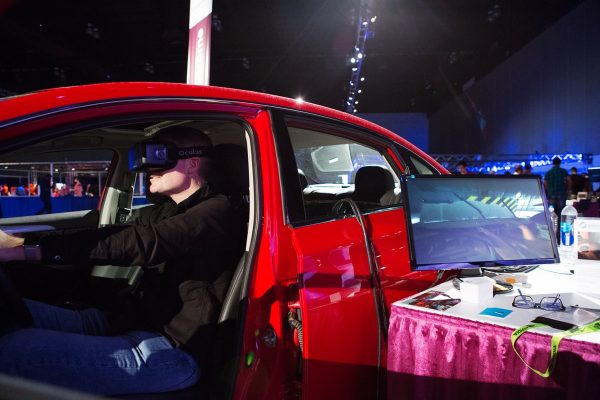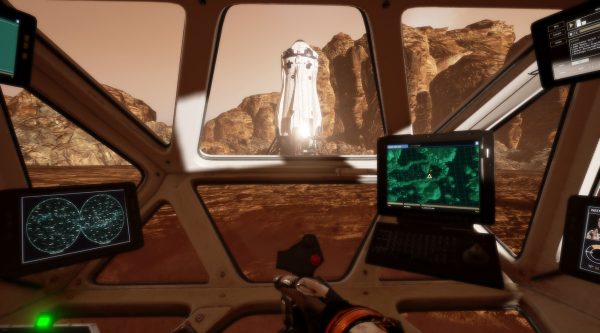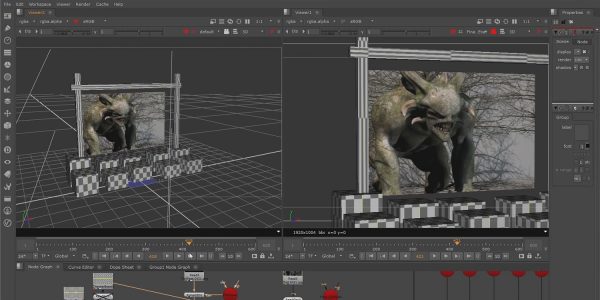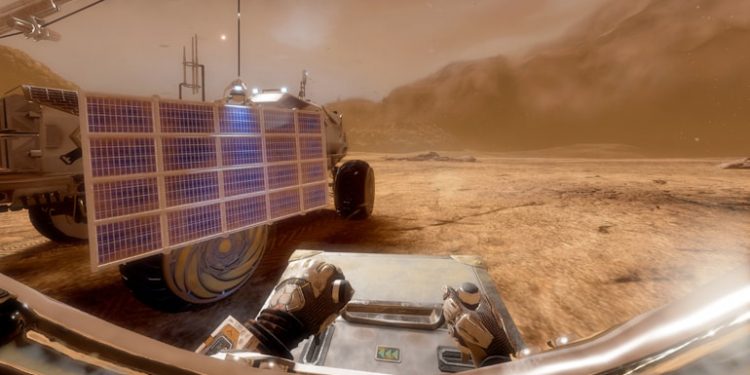At fxguide and within fxphd we’ve been covering the myriad of virtual reality (VR) experiences on offer from around the world, many of which are, of course, brought to life with the help of a visual effects studio. In fact, it sometimes seems like visual effects studios are perfectly placed to work in VR, whether they be live action or CG experiences, or a hybrid. VFX artists have been stitching panoramas and dealing with stereo imagery for many years, an absolutely necessary skill. And they’ve been working in key areas such as CG creation, compositing, tracking and virtual sets for even longer.

Since VFX studios are often behind the asset-builds in major films or TV shows, it makes sense that those same assets (and studios) might also be used in VR experiences for promotion. Convergence with the game industry, too, is well underway, and that’s a good thing since many VR experiences require real-time rendering.
Perhaps one of the major reasons effects studios are suited to VR is their high level of ingenuity. Long has there been a tradition in special and visual effects for artists to get their hands dirty, innovate and find solutions to on-set and post production problems. That same ingenuity is required in the still somewhat nascent VR industry.
With this in mind, we thought it might be interesting to run down what a couple of the major VFX studios have been producing recently in VR. So, grab your Gear VR, your DK2 or your Google Cardboard, and head virtually into the VFX VR world.
Lexus Hoverboard – Ride the Slide
In ‘Ride the Slide’, an immersive experience from Lexus, participants at a custom ‘skatepark’ at the LA Autoshow were able to ride a Hoverboard – albeit virtually. The project was a collaboration between Spinifex Group U.S. and Mill+ and utilized a pressure sensitive controller and a setup within EPIC’s Unreal Engine 4 to let people ride an actual room.
Riders stood on the controller and by leaning forward or back or to the side could control the speed and direction of their Hoverboard. Meanwhile, around them were 18 displays showcasing the UE4 renders at 60 fps, with virtual camera support so that the scene changed appropriately as the ride continued.
Find out more at the The Mill’s website.
The Martian VR Experience

Hot on the heels of the success of Ridley Scott’s The Martian, several VR players got together for this VR extravaganza. 20th Century Fox, Fox Innovation Lab, RSA Films, MPC VR and The VR Company are behind The Martian VR Experience, which sees viewers fly onto the surface of Mars, steer at zero gravity through space, drive a rover and experience other key scenes from the Matt Damon film in a 360-degree virtual reality environment.
So far only a sneak peek has been released, while CES attendees got to try out the experience (on Oculus Rift with Oculus Touch controllers and the HTC Vive-Pr). However, the entire story will be available on tethered VR platforms this year. What’s interesting perhaps is that The Martian VR Experience is clearly a movie tie-in, but reportedly had participants at CES clamoring for more than the 20-25 minutes worth of Mars time.
Faraday Future
Another VR CES event that MPC also had a hand in was the VR 360 degree FFZERO1 Concept experience for Faraday Future. Users experienced sitting behind the wheel of the high-performance electric car via a Samsung’s Gear VR. MPC Creative filmed a stand-in vehicle in Malibu and on a performance racetrack to re-create the driving and camera work. The two locations were combined with visual effects and the stand-in car replaced with a CG replica of the Faraday Future concept car. Find out more at MPC’s website.

The experiences we’ve highlighted here are a mixture of at-location events and ones that can be experienced on the multitude of headware and mobile devices. More and more VR events are offering real-time ride film-like experiences too, and a theme park in the UK recently announced a new roller coaster where riders will be able to wear VR helmets. Right now at fxphd you can find out more about this world of VR and how artists complete VR compositing in programs such as NUKE, with VFX supervisor Daniel Smith’s NUK234 Immersive VR Compositing in Nuke. In this course, Daniel is employing a combination of complex view dependent techniques to create imagery that is meant to be projected on a flat surface but look three dimensional and have parallax from the point of view of the observer – think multimedia rides, theme park attractions, building projections and VR experiences.
